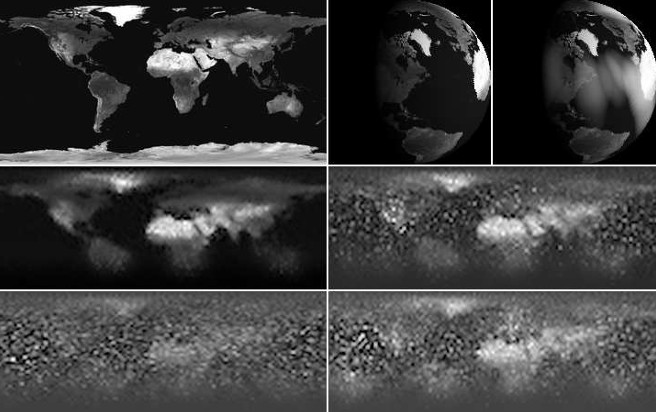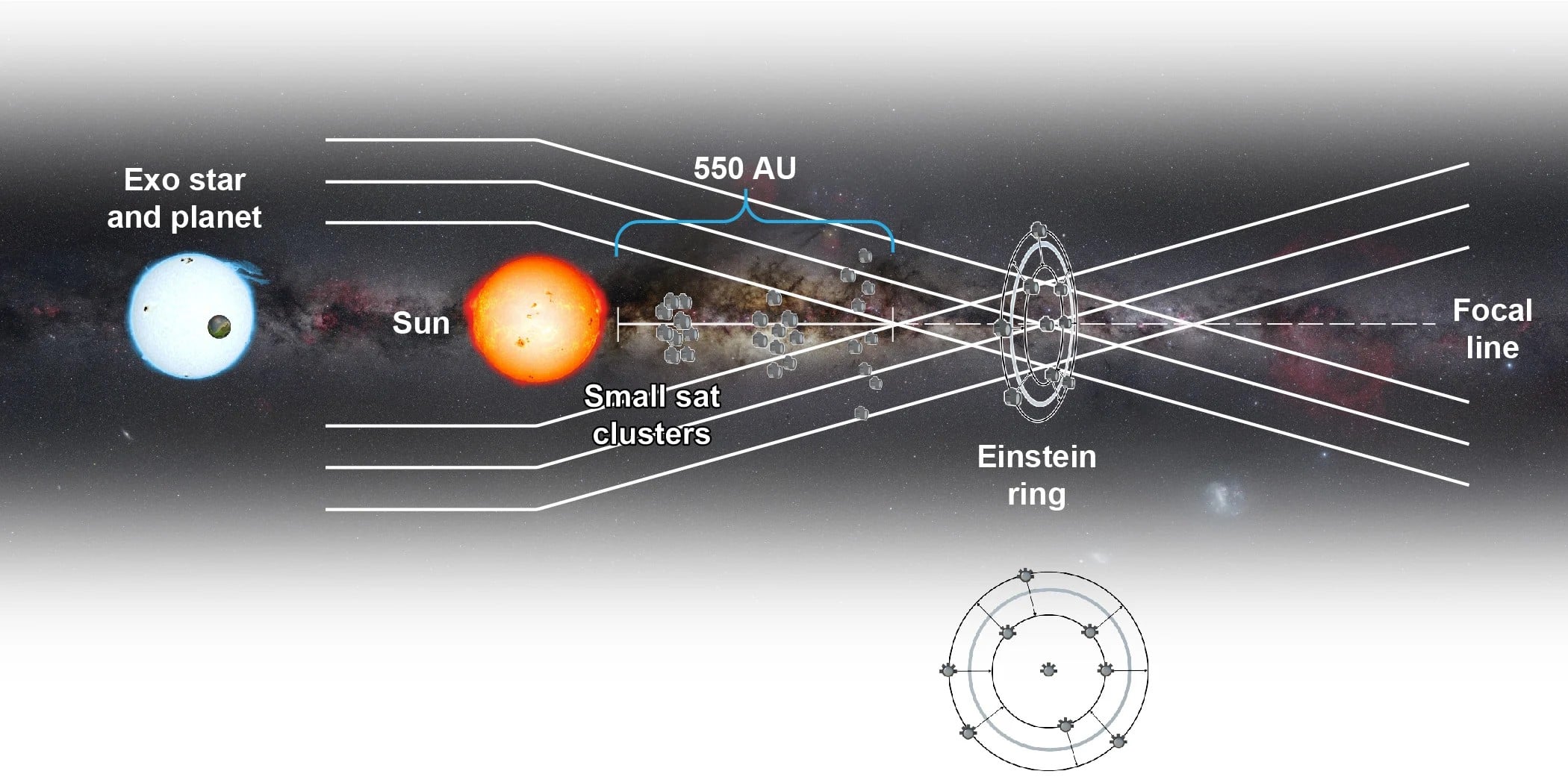The solar gravitation lens (SGL) has much potential as a telescope. This point in space, located about 650 AU away from the Sun, uses fundamental properties of physics to amplify the light from extremely far away objects, allowing us to see them at a level of detail unachievable anywhere else. However, any SGL mission would face plenty of technical and physical challenges. A new paper by independent researcher Viktor Toth is the latest in a series that discusses those challenges when imaging a far-away exoplanet, and in particular, looks at the difficulties in dealing with potential moving cloud cover. He concludes that using the SGL might not be the most effective way of capturing high-resolution images of an exoplanet, after all.
Once scientists realized some of the further implications of the Theory of Relativity, they began to recognize that they could use our own Sun as a giant magnifier for light coming from far away. Thus, the SGL was born. However, due to the extreme optics involved, the distance to the SGL was prohibitively expensive - at 650 AU, it was far further than any previous mission had gone. Even Voyager, the current farthest spacecraft from Earth, is only about 1/4 of the distance to that point.
However, even with that limitation, utilizing the SGL could allow us to see actual alien civilizations on an exoplanet, at least in theory. If we had a sufficiently good candidate, we could send a giant telescope to collect the light from that planet individually and, with the magnifying power of the SGL, see features as small as 10 km per pixel—about the size of a reasonable town.
Fraser interviews Dr. Slava Turyshev, a JPL expert on the solar gravitational lens, and co-author with Mr. Toth on many of his SGL papers.
However, according to previous work by Mr. Toth and colleagues, there are plenty of problems with this theoretical use of the SGL. One of the most difficult to deal with is distortions from the corona of the Sun itself. It is a massive source of "noise" when comparing the exoplanet's light to the light of our much closer star. Another difficult challenge is dealing with the Sun's quadrupole moment, which measures how much the Sun deviates from being a perfect sphere. At the dimensions of the SGL, even a slight deviation from an ideal sphere shape can cause massive changes in where the light from an exoplanet goes.
Adding to those challenges, this particular paper focuses on a new one—variable cloud cover. Since Earth, the only known planet to harbor life, has moving clouds, it is safe to guesstimate that other planets with life on them could also potentially have clouds. However, moving clouds make it extraordinarily difficult to separate the signal of a planet's surface from the noise introduced by the moving clouds.
Mr. Toth simulated the effects that moving clouds on Earth would have if they were being viewed from an SGL at another star. The images make it very difficult to make out even our familiar continental structure, let alone anything that could be identifiable as a biosignature or something made by intelligent aliens. Combining that challenge with the other ones already faced by SGL observatories will make functionally observing any planet even more challenging.
 The output of Mr. Toth's simulations - the bottom two rows represent the expected signal with approximately 13.7% cloud cover - much less than on a typical day on Earth.
The output of Mr. Toth's simulations - the bottom two rows represent the expected signal with approximately 13.7% cloud cover - much less than on a typical day on Earth.
Credit - V. Toth
However, Mr. Toth mentions a potential solution in the discussion at the end of his paper. He suggests that we could send a network of 10,000 satellites to the SGL. That might sound like a lot, but it's at least in the same ballpark as the current number of Starlink satellites. If each of those 10,000 satellites has a collecting mirror area of 1m, many of the problems with monitoring an exoplanet, such as tracking its motion, eliminating noise from the movable clouds, and even dealing with light from the exoplanet's host star, become much more tractable.
It will be a long, long time before we can muster that kind of technological solution to the problem. But in the meantime, physicists will keep imagining uses for this unique aspect of our solar system, even if its eventual implementation seems impractical for some time yet.
Learn More:
V Toth -Peeking under the clouds: Is exoplanet imaging with the solar gravitational lens feasible?
UT -The Sun's Natural Gravitational Lensing is More Powerful Than You Thought
UT -A Mission to Reach the Solar Gravitational Lens in 30 Years
UT -If We Used the Sun as a Gravitational Lens Telescope, This is What a Planet at Proxima Centauri Would Look Like
 Universe Today
Universe Today
